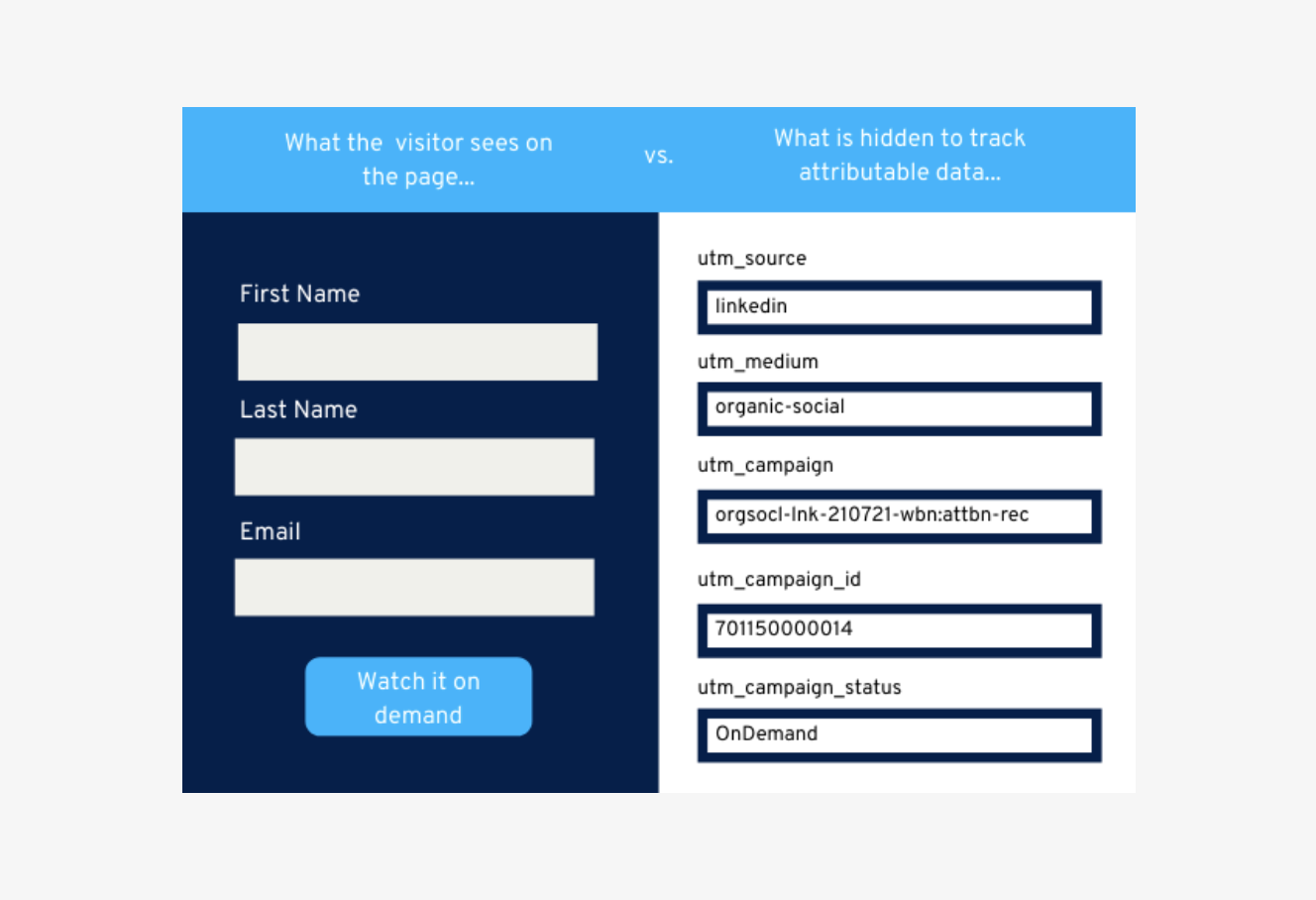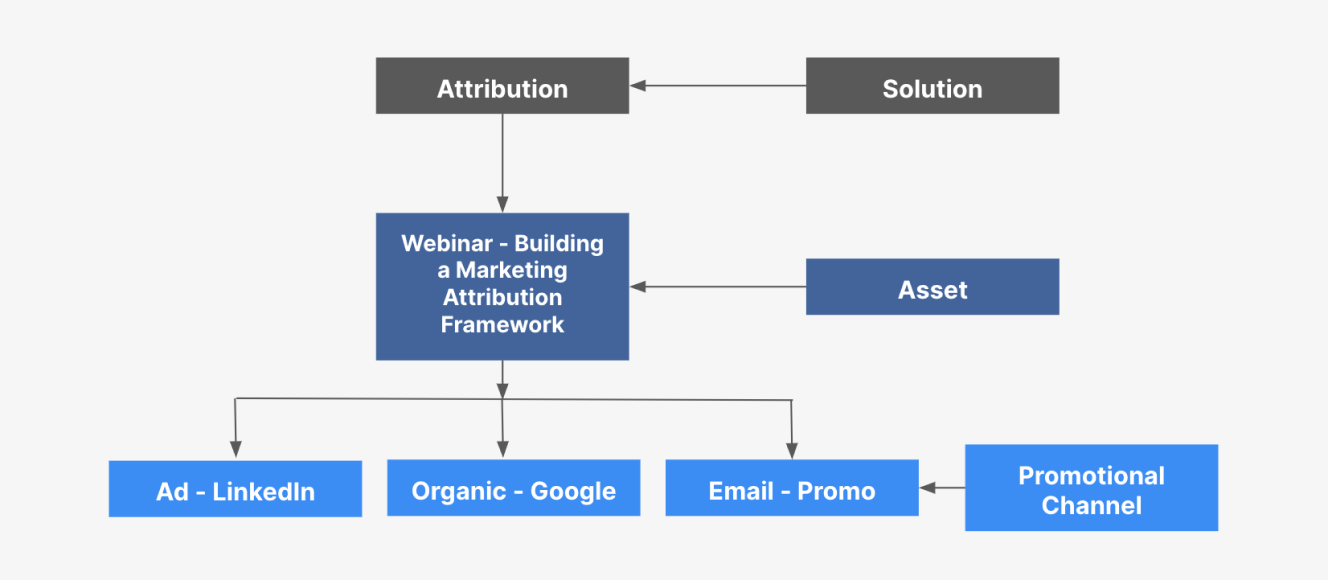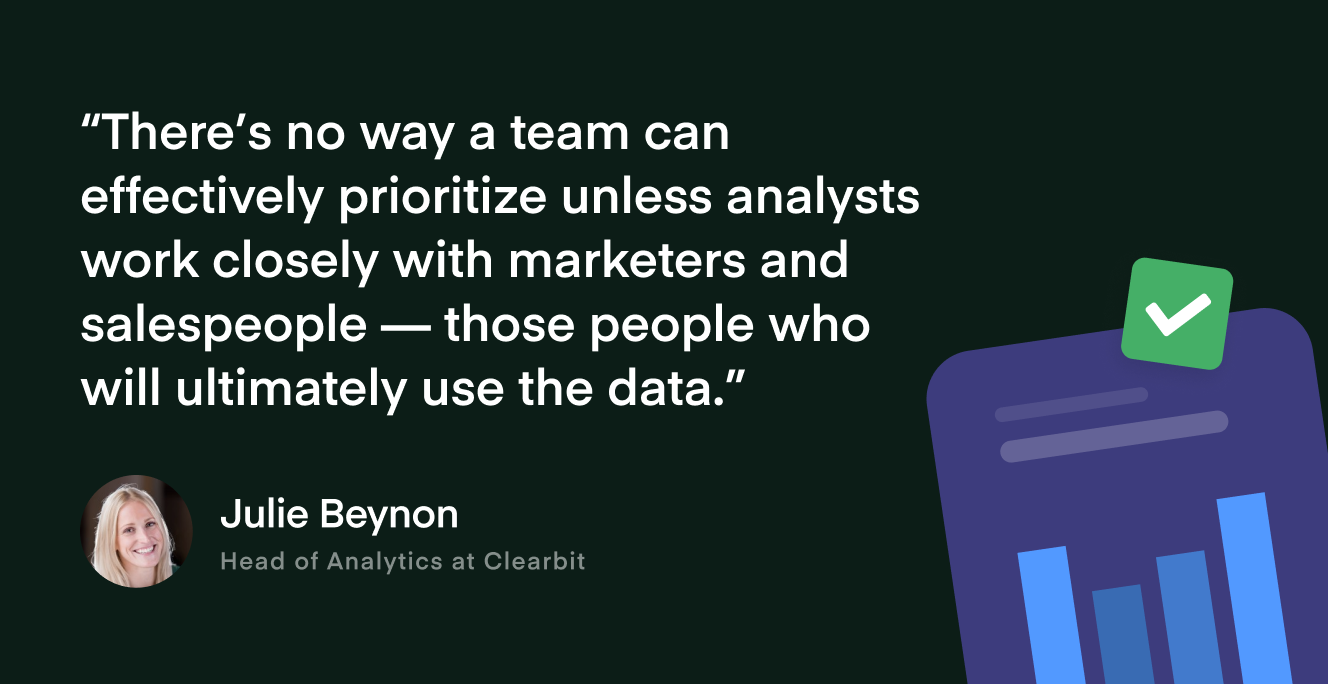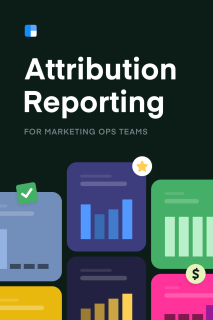Chapter 2
5 minutes
How to build a data-driven foundation for your attribution model
The first step in building a successful marketing attribution model is laying the groundwork.
There is often pressure to overcomplicate attribution and skip the essentials, but as Maren Morris wisely sings “the house don’t fall when the bones are good”.
Utilize hidden form fields to track your marketing efforts
Start simple by capturing conversion path data on your website with hidden form fields. Hidden fields aren’t visible to the website visitor but enable you to populate UTM (Urchin Tracking Module) parameter information, such as:
- Medium: The marketing channel such as social or email
- Source: The specific site such as LinkedIn or Facebook
- Campaign: The campaign associated with the promotion
- Term: The keywords associated with a paid campaign (less commonly used)
- Content: Specific links such as a CTA button within an email (less commonly used)
Using hidden form fields ensures you capture critical information while keeping your forms short. On average, we’ve found that our customers see a 3-5% increase in conversions for every field removed, and Gong saw a 70% lift in demo request conversions by shortening their form to a single field.

A URL with UTM parameters might look something like: “clearbit.com/resources/books/lead-qualification?utm_source=linkedin&utm_medium=organic-social&utm_campaign=lead-qualification”.
URLs with UTM parameters can be created through spreadsheets or with the help of a tool like Google Analytics URL Builder. Having an attributable link structure helps you differentiate between touchpoints, determine what channels and programs deserve conversion credit, and understand what is performing well and ultimately driving revenue. This information can be populated in Salesforce or your system of record for more granular reporting throughout the customer journey.

The use of hidden form fields also ensures you are tracking critical information at the point of conversion without relying on third-party cookies. Leveraging first-party data, rather than third-party data, is especially important with the rise in ad blockers, the Apple iOS 14.5 update, and the continued trend toward more privacy for consumers.
With hidden form fields in place, it’s time to build your campaign infrastructure.
Set up your CRM for success
If you’ve ever been to an In-N-Out Burger, you know their menu follows a 1,2,3 format. You can get a double-double, a cheeseburger, or a hamburger. It’s simple and structured.
Craig Jordan, Founder and CEO at SaaScend, suggests thinking about your campaign infrastructure in the same way. He recommends implementing three levels:
- The product or solution that you’re selling
- The conversion point such as a webinar registration
- The promotional channels such as paid LinkedIn or email

Utilizing this organizational structure in your CRM makes it easy to create reports that show metrics identifying which marketing activities are performing well and driving conversions. For example, you can identify whether Facebook ads, organic search, or email drove the most webinar registrants and pipeline. Knowing what marketing campaigns and channels are performing well allows you to refine your marketing strategy, allocate marketing spend accordingly, and optimize your marketing campaigns. And, “differentiation between levels two and three allows you to do some cool things and sets you up for more complex modeling down the road,” shares Craig.
For more attribution advice from Julie Beynon, Head of Analytics at Clearbit, and Craig Jordan, Founder and CEO at SaaScend, check out our recent virtual event.
Ask the right questions
Don’t put the cart before the horse. With a solid foundation of lead capture and campaign hierarchy in place, you’re probably itching to start building your marketing attribution model. Before diving into the logistics, it’s important to take a step back, collaborate with cross-functional partners, and ensure what you are building will be beneficial to your end-users.
Dive into the details
Building relationships with your analytics team is a critical component of successful attribution. Without an understanding of the inputs required to build the model, it will be difficult to use and socialize the outputs. On the flip side, to help put the right pieces in place, analytics teams need the context on how the model will be used.
Emily Ritter, Director of Marketing at Mode, shared how building a culture of asking great questions and collaborating with her analytics team helped in her attribution journey. She says, “As we started to pipe all of our page-load data into Amazon Redshift, I started asking how we could better understand the impacts of referral traffic on our customer acquisition efforts. Everywhere I’ve worked in the past, this exercise is a quagmire of UTM parameters, messy data, and frustrating dead ends in Google Analytics. Instead, because of the open dialogue we had with the analysts who knew what was possible, we were able to take a step back and talk about the insights we were trying to find, both short- and long-term.”
Having an ongoing dialogue with your analytics team helps you understand the how and helps your analytics team better understand the why.
Don’t make assumptions
While you may have an initial plan in mind for your attribution model, make sure to validate your hypothesis with key stakeholders on the sales and marketing teams. This is an important way to drive alignment towards a common revenue goal.
When Julie was first working on building an attribution model for the team, she had grand dreams of multi-touch attribution. However, after talking with sales and marketing stakeholders she realized they cared mainly about conversion events at key stages in the buyer journey. This changed the attribution conversation entirely and led to a last-touch attribution model that identifies conversions at multiple points in the customer journey.


